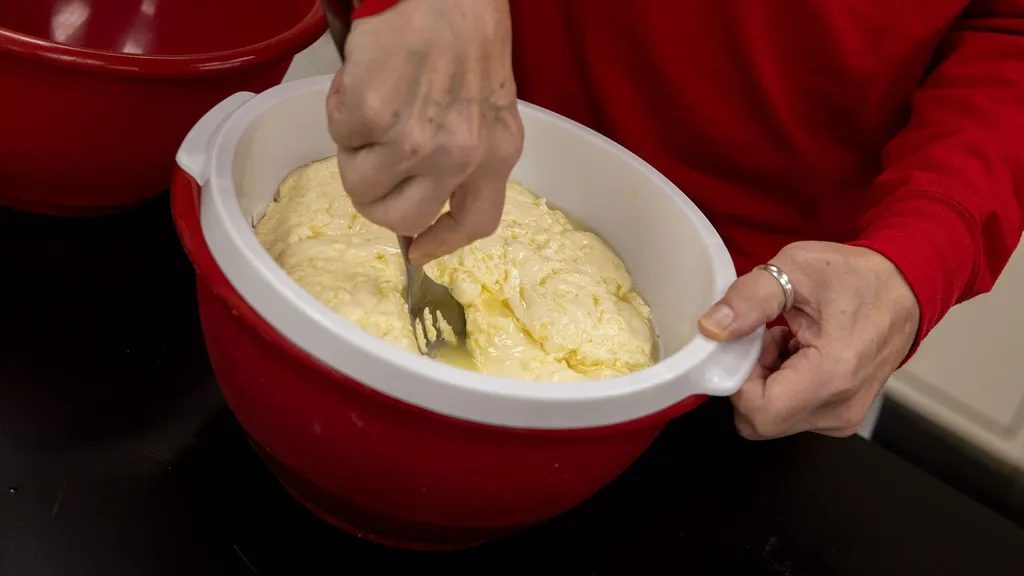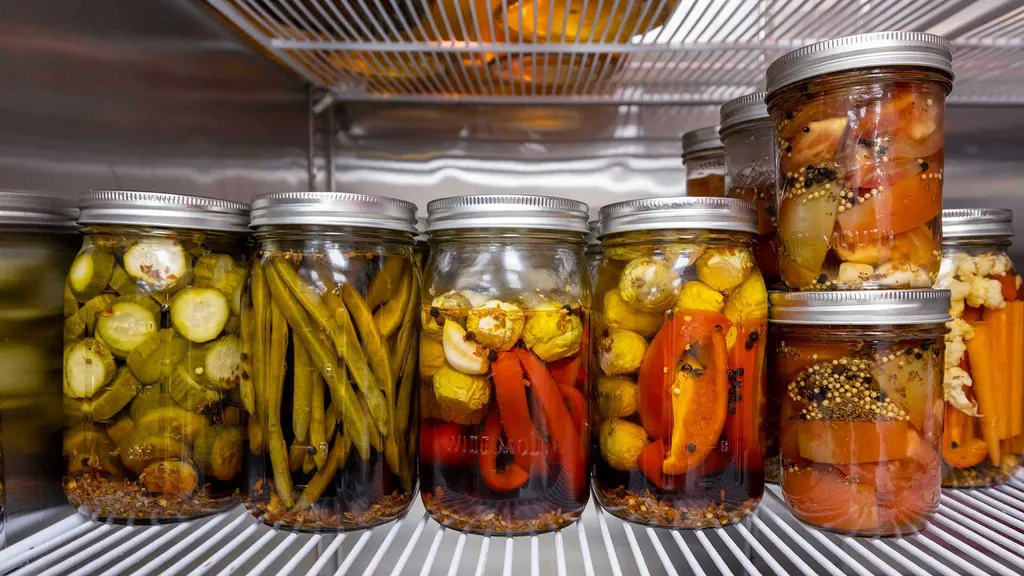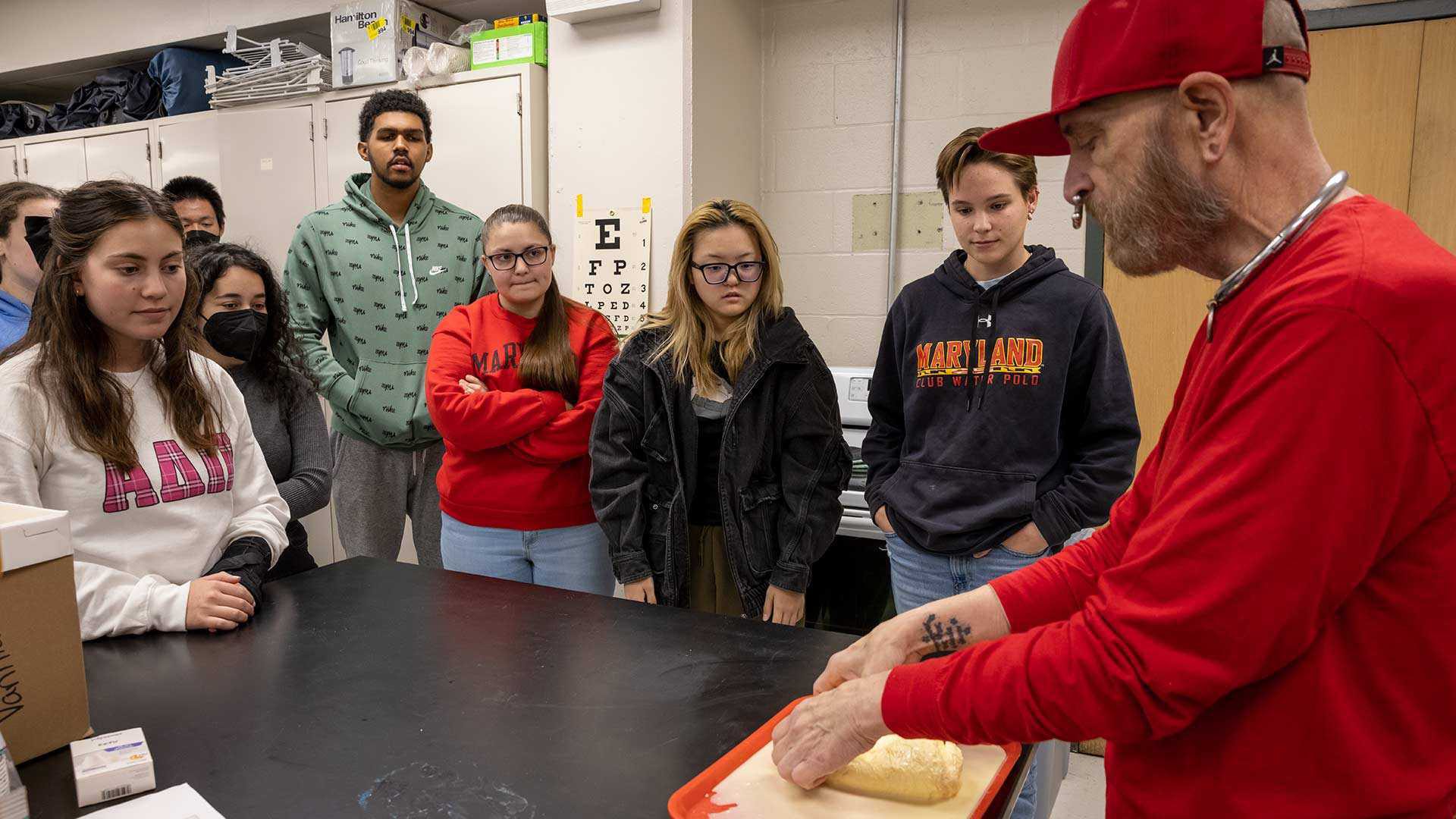- November 18, 2022
- By Karen Shih ’09
In front of a table featuring a bubbling bucket of beer in the making and a glass jar of fermenting kombucha, Senior Lecturer Charlie Apter presented a tray of faintly yellow mozzarella, still warm from the cheese-making process.
“Is there anyone who’s not a cheese lover?” he asked, prompting three hands to go up in his class. “How un-American,” Apter joked.
The soft, stretchy pieces he offered for tasting rivaled the flavor you’d find at a fine Italian restaurant—though they weren’t quite as smooth and round as a store-bought version. The mozzarella, which got its unusual golden hue from grass-fed Guernsey cow milk, transformed from liquid to solid in just over half an hour in a lab in the Animal
Science Building.

Cheese is just one of the many foods Apter makes in his popular class, “Eating With Eyes Wide Open,” offered through the Department of Animal and Avian Sciences.
“The goal is for students to know where their food comes from and make more informed choices, rather than just eating whatever is in front of them,” said Apter, a self-described “professor who doesn’t look like a professor,” with his nose ring, baseball cap and fully tattooed legs.
He has taught the class, which fulfills an I-series general-education requirement and is part of the sustainability minor, for almost a decade, and enrollment hits capacity every spring and fall semester. In lectures, he covers the impacts of commercial agriculture, including animal welfare and the carbon footprints of different crops and livestock. Then, in weekly labs, he and 60 students (across three sections) make and taste bread, pickles, soy milk, cider, dehydrated apples and more.
“The bread tasted better than what you get in most restaurants,” said kinesiology major Nick Patton ’24. (The secret? Rosemary garlic mix in the no-knead dough.)
One of Apter’s secondary goals is to get picky eaters to try new things. Since he developed the class, soy milk has increased in popularity, but pickles remain a tough sell.

Throughout the semester, students also take on various food challenges, such as a 48-hour sugar fast (fruit is allowed, but no honey or artificial sweeteners), a weeklong diary of every item they eat and a fast-food day.
“The sugar challenge was the most difficult for me,” said Rachel McCrea ’25. “I’m one of the strictest people I know about sugar, and I found out that I still eat more than the recommended amount!”
Apter is looking forward to the “fellowship meal” he hosts at the end of each semester, when students use their newfound knowledge and skills to cook a dish they bring to a potluck. Even those with the most limited palates are respectful of their classmates’ efforts, so everyone tries the food, which often reflects students’ heritage.
Although they may not have much time to ponder the big picture as they cram in meals between classes, internships and club activities, small adjustments in his students’ attitudes toward food can make a difference as the world confronts the realities of climate change, Apter said.
His lessons have persuaded at least one student. After learning more about the environmental impact and the factory farm conditions that produce commercially available beef and pork, psychology major Maya Grossman ’25 said, “I just cut out red meat.”
